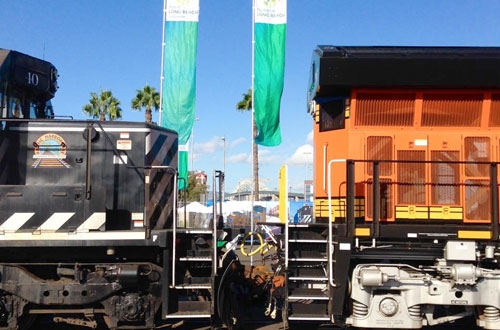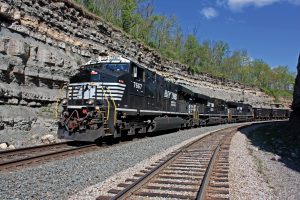Port of Long Beach completes Green Port Gateway rail project
Written by Jenifer Nunez, assistant editor
On Sept. 15, officials celebrated the completion of a $93-million rail project vital for improving the efficiency and sustainability of cargo movement as shipment volumes increase at the Port of Long Beach.
The “Green Port Gateway” project, funded in part with state and federal transportation dollars, was greenlighted for construction at the end of 2012 and was completed this year. The project realigned a critical rail pathway to relieve a bottleneck, allowing port terminals to increase its use of on-dock rail, decreasing truck traffic and air pollution. The upgrades will serve the port’s southeast terminals, including the new Middle Harbor terminal.
Overall, almost six miles of new track was laid. The work included adding a third rail line under Ocean Boulevard, along with new retaining walls, utility line modifications and roadway improvements. Every on-dock rail train eliminates as many as 750 truck trips from regional roadways.
“The Green Port Gateway shows the Port of Long Beach’s commitment to moving trade in an environmentally responsible way,” said Lori Ann Guzmán, president of the Board of Harbor Commissioners. “I want to thank our state and federal partners who recognized the importance of this critical project.”
The California State Transportation Agency, California Transportation Commission and California Department of Transportation helped with $23.1 million from the state’s Proposition 1B Trade Corridor Improvement Fund. The U.S. Department of Transportation and the Maritime Administration assisted with $17 million from the Transportation Investment Generating Economic Recovery (TIGER) III program.
The port has plans for $1 billion in rail projects over the next decade as part of a broader modernization program to strengthen the port’s competitiveness and reduce port-related impacts to the environment.
Port of Long Beach CEO Jon Slangerup said the Green Port Gateway is a key part of building the “Port of the Future.”
“This project will enable us to reach our goal of moving 35 percent of containerized cargo via on-dock rail this decade,” Slangerup said. “It will also support our long-range ambition to eventually move 50 percent of our goods directly from terminals by train.”





